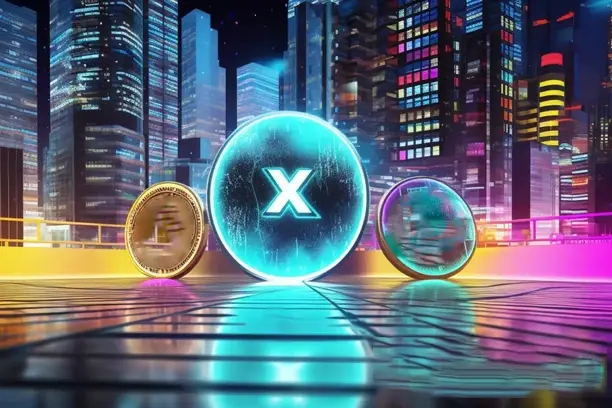Ether's EIP-1559 protocol is an important innovation in the blockchain field in recent years, which has made significant adjustments to the transaction fee mechanism of the Ether network. By introducing a fixed Base Fee and a destruction mechanism, EIP-1559 not only improves the predictability of transaction fees, but also effectively reduces inflation in Ether. In this article, we will take you deeper into the innovations of the EIP-1559 protocol and its potential impact on the Ether ecosystem and users.

EIP-1559 Protocol Background
Ether, the world's second largest cryptocurrency platform, has been facing the problem of volatile transaction fees. The traditional transaction fee mechanism relies on an auction method where users are required to bid in order to prioritize transactions. While this approach ensures that high-priced transactions are prioritized when the network is congested, it also leads to extreme volatility in transaction fees, making transaction costs unpredictable for the average user. To alleviate this problem, Ether has proposed the EIP-1559 protocol.
The EIP-1559 protocol is part of the Ether 2.0 upgrade, and the goal is to make it possible for users to have a clearer picture of what they are paying by reforming the mechanics of transaction fees and to reduce the nuisance of fluctuating fees.
Innovative mechanisms of EIP-1559
The core innovation of the EIP-1559 protocol is the introduction of the Base Fee and destruction mechanism.
Base Fee
The base charge in the EIP-1559 protocol is a dynamically adjusted charge that is directly tied to the current congestion of the network. When the network is congested, the base fee automatically increases; when the network is idle, the base fee decreases. This eliminates the need for users to manually adjust transaction fees, as in traditional mechanisms, and instead the system intelligently sets them based on the actual conditions of the network.
- When a user initiates a transaction, the system automatically calculates the required base fee.
- The base fee is automatically adjusted by the network, unlike miner bidding in the traditional approach.
- The introduction of this mechanism ensures fairness and transparency of fees.
Destruction mechanism
Another innovation of EIP-1559 is the destruction mechanism of transaction fees. In the EIP-1559 protocol, part of the transaction fees are no longer paid to miners, but are destroyed directly. This mechanism helps to reduce the supply of Ether, which may have a positive impact on the long-term value of Ether.
- The fee for each transaction is automatically divided into two parts: the base fee and the tip.
- In this case, the base fee is destroyed and the tip is paid to the miner.
- The destruction mechanism helps to reduce the total supply of Ether and increase the long-term value.
Impact of EIP-1559 on the Ethernet network
The EIP-1559 protocol is not only innovative on a technical level, but its overall impact on the Ethernet network is profound.
Predictability of transaction costs
Prior to the implementation of EIP-1559, transaction fees in Ethernet were highly dependent on market demand and network congestion. Users often had to guess the correct fee for a transaction to ensure that it was processed as quickly as possible.The implementation of EIP-1559 has made it possible to effectively solve this problem. Users can view the current base fees via their Ether wallet or DApp, and thus more accurately choose the right transaction fees.
- Users no longer need to worry about high or low transaction fees.
- Transparency of base fees improves the predictability of the trading experience.
Impact on miners
The implementation of the EIP-1559 protocol also brings important changes for miners. While traditional transaction fees are paid to miners through bidding, the EIP-1559 protocol destroys the base fee and only the tip portion will be paid to miners. This means a change in the revenue structure for miners, which could affect their profit model.
- Miners no longer rely solely on transaction fees for their source of income.
- Miners may need to rely more on the long-term growth and transaction volumes of the Ethernet network.
Potential Risks and Challenges of EIP-1559
While the EIP-1559 protocol brings innovation in many ways, it also has certain risks and challenges.
Cost volatility remains
Although EIP-1559 significantly reduces the volatility of fees by dynamically adjusting the base fee, users' transaction fees can still fluctuate dramatically under extreme network congestion, especially during certain "Gas Price" peak periods, when users may be required to pay a high tip fee in order to ensure that transactions are processed first.

Long-term effects of the destruction mechanism
The introduction of the destruction mechanism may affect Ether inflation, but its long-term effect remains to be seen. If the amount of Ether destroyed far exceeds the tips paid by miners and users, it could lead to a reduction in the supply of Ether, which could push up its price.
Future prospects for EIP-1559
With the further application of the EIP-1559 protocol and the advancement of Ether 2.0, it is expected that Ether's transaction fee mechanism will become more efficient. By increasing the transaction processing capacity of the network and reducing the volatility of fees, EIP-1559 is expected to attract more developers and users to the Ethernet ecosystem.
- EIP-1559 is expected to drive the Ethernet ecosystem.
- The implementation of Ethernet 2.0 will further optimize network performance and enhance user experience.
concluding remarks
Overall, the EIP-1559 protocol brings significant improvements in transaction fee transparency and predictability to Ether, while also enhancing the long-term value of Ether through its destruction mechanism. While there are some potential risks, these innovations certainly lay a more solid foundation for the future of the Ether network. With further implementation and refinement of the protocol, the future of the Ether network will be even more efficient and stable, and is something to keep an eye on.







